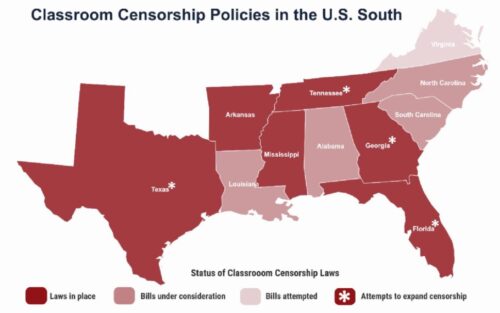The blitz to silence Jimmy Kimmel wasn’t about protecting Charlie Kirk’s memory or maintaining broadcast standards. It was about suppressing a devastating observation before it could be digested. Kimmel, perhaps unknowingly, threatened the entire core mythology of the MAGA movement and could have completely destroyed it.
Within hours of FCC threats, ABC pulled Kimmel “indefinitely”. It showed a response so swift and coordinated that it disclosed how dangerous Kimmel had become to the power structure.
What Kimmel Actually Said
At face value, to the untrained ear, the words don’t seem to amount to much. Many people sound confused by the lack of any line being crossed by the sentences they hear. What did Kimmel say that is deemed so unacceptable and why?
On Monday night, Kimmel made a simple observation:
We hit some new lows over the weekend with the MAGA gang desperately trying to characterize this kid who murdered Charlie Kirk as anything other than one of them and doing everything they can to score political points from it.
This was not regular comedy, not was it a partisan attack. This was a threat assessment. This was national security analysis delivered in real time from a huge soap box (over 20 million YouTube followers alone).
The Jester Isn’t Supposed to be so Direct
The fact is Tyler Robinson wasn’t an outside agitator. He was a homegrown product:
- Raised in a “diehard Trump” family
- Conservative through high school
- Gradually shifted away from family’s politics
- Became alienated from his original ideological community
- Turned violently against who he once belonged with
This trajectory is crucial to understanding the political threat of MAGA to America. And it fits the same pattern as the attempted assassination of Trump. MAGA cannot afford to acknowledge that they produce their own worst enemies from within.
There is a Historical Pattern
Authoritarian movements always generate violence against their own ranks, a consistent response of immediate disavowal and historical revisionism. The perpetrator must be retroactively declared to have “never really been one of us.”
Remember Stalin’s Show Trials?
Old Bolsheviks were tortured into confessing they had “always been” foreign agents, not loyal revolutionaries who developed different views.
Have you studied the Röhm Purge?
Hitler’s SA leader, instrumental in the Nazi rise, was reframed as a traitor who was “always” working against the movement.
And Hitler’s Night of the Long Knives?
Nazis executed hundreds of their own leaders who they abruptly declared “traitors”, labeling their own men as too leftist in a simple trick to rush into view a high-profile death penalty for dissent.
Who can forget McCarthyism?
Americans who fought fascism in Spain became “premature anti-fascists” – evidence of communist infiltration rather than principled anti-authoritarianism.
And does anyone ever talk anymore about the KKK “death splits” of the 1960s?
Factions of the robed domestic terrorists would execute their own members if they detected allegiance to a competing racist group, let alone disagreeing with all the hate or going against the whole thing. Each group claimed others as lesser and “never true Klansmen”.
Violent suppression of dissent may seem foreign, yet actually is an important foundation in American history. Extreme right groups assassinating those speaking is a long recurring pattern. White nationalist mobs in 1837 Missouri, for example, destroyed Elijah Lovejoy’s printing press four separate times for daring to report a free Black man had been lynched. Four times he tried to speak, and four times the grandfathers of MAGA came knocking to censor him.
Lovejoy relocated across the river and border to Illinois, fighting for freedom that Americans claim is the norm, and yet an armed mob stormed his stone warehouse to shoot him dead and destroy his press a fifth and final time.
A mob conspired to throw his half-ton printing press into the Mississippi River as vengeance, rather than even allow printing different content. And perhaps most notably, the system prosecuted no one. It was a young man in Illinois, Abraham Lincoln, who famously called the Lovejoy murder “the most important single event that ever happened in the new world,” recognizing that when mass American movements (e.g. MAGA) aggressively push hate on reporters, democracy itself dies.
The techniques obviously change and accelerate over time, but the goal remains identical today as in history: eliminate those who expose inconvenient truths to illegitimate power. A recurring story of organized white mob violence in America, suppression of freedoms to challenge racist hate groups, regularly has elected itself into systematic government policy at the highest levels.
Deadly authoritarian response to defection and those reporting it accurately thus has distinctly American origins. Long before the infamous and hated Stalin or Hitler, it was multiple U.S. presidents who established modern templates of denying freedom by eliminating those they disagreed with.
Andrew Jackson (1829-1837) used economic warfare against newspapers while implementing Indian Removal – genocide disguised as policy. Jackson owned over 150 enslaved people, believed Black people were “inferior,” and his policies directly resulted in the deaths of thousands of Native Americans forced from their lands. Literally genocidal.
James K. Polk (1845-1849) pioneered military censorship and “administrative press” propaganda during his war of territorial conquest against Mexico. Polk was a slaveholder who expanded slavery westward and believed in Anglo-Saxon racial superiority as justification for seizing Mexican territory. California’s future governor Leland Stanford would later implement this same genocidal logic, signing bills to fund human “killing expeditions” against 150,000 Native people to seize their land, leaving only 12,000 alive (establishing Stanford University to exercise ongoing information control).
Woodrow Wilson (1913-1921), aggressively restored the KKK, criminalized dissent through the Espionage Act while resegregating the federal government and screening “Birth of a Nation” at the White House. Wilson, who called divisive lies in a KKK propaganda film “terribly true,” reversed decades of racial progress, removed Black federal employees, promoted use of federal troops against domestic political groups, and institutionalized Jim Crow in government.

These aren’t partisan characterizations because they reflect documented historical policies and beliefs. Jackson’s Indian Removal Act was genocide, explicitly designed to clear land for white settlers while eliminating Native peoples. Polk’s “Manifest Destiny” was genocide, fundamentally about Anglo-Saxon racial dominance over “inferior” Mexican and Native populations. Wilson’s administration marked the most systematic federal implementation of white supremacy since Reconstruction, with the president himself declaring that “segregation is not humiliating, but a benefit.” He sounds so much like JD Vance you’d be forgiven for confusing the two.
All three objectively were toxic white supremacists who understood that maintaining racial hierarchy required heavy censorship in America to control information flows. These Presidents established a freedom-crushing template Americans love to pretend never happened: government power used to silence media criticism during moments when the violence of American institutionalized white supremacy becomes visible.
The American movement of hate in power cannot tolerate exposure of its constant production of violent dissidents, because the entire premise of their false victim narrative is to expose and fight hidden enemies.
Kimmel Threatened Everything MAGA Hides
Kimmel identified the exact moment MAGA was executing this historical playbook. He called out their “desperate” attempt to recharacterize their own Robinson as an outsider. Among all the natural confusion about Robinson, historically he fits the pattern of a young man who turned against the group that trained him to violently hate others, as if it could never be them.
Note: Individual radicalization involves psychological, social, and circumstantial factors. Historical analysis can help illuminate the role of disavowal patterns.
This observation strikes at the movement’s existential vulnerability. If MAGA acknowledges that “gun-toting MAGA children” are flipping on them to “strike at MAGA,” they must confront uncomfortable questions:
- What flips the warrior against their own kind?
- How did the hate rhetoric affect someone raised within it?
- What does his violence say about their methods of dealing with dissent?
- Are their internal dynamics the very threats they claim to protect against?
Disavowal as Radicalization
Here’s the most damaging hypothesis that Kimmel stumbled upon: the act of disowning becomes the radicalizing force itself. When violent hate movements spin out or expel members who think for themselves, who question the orthodoxy, those rejected individuals sometimes turn violently against what expelled them.
Imagine the cyclical effects of hearing a group say they will hate you for hating that they hate you.
Robinson’s case reveals this process in real time. A family dinner where both Robinson and a relative criticized Kirk shows the complexity – even family members shared his concerns about Kirk’s “hate,” yet the moment violence occurred, the movement disowned Robinson entirely.
This disavowal pattern actively generates the “other” that becomes dangerous. The rejection and denial of connection feeds the very alienation that can lead to violence.
Warp Speed of Suppression
The coordinated response – FCC threats followed by immediate corporate capitulation – reveals how existentially threatening this analysis was. Major broadcast companies with billions at stake in regulatory approval didn’t hesitate: Kimmel had to go. Consider it within the evolution of American presidential harsh media control:
- Months/years of Jackson: Economic pressure through government contracts while conducting Native American genocide
- Weeks/months of Polk: Military censorship and propaganda system during racialized territorial conquest
- Legislative days of Wilson: Legal criminalization of dissent while institutionalizing federal segregation
- Televised campaigns of Nixon: Direct government harassment of civil rights leaders and anti-war journalists
- Instant social media of today: Regulatory threats achieving instant compliance
Each administration refined techniques for protecting white supremacist governance through information control.

Nixon’s “enemies lists” targeted journalists covering civil rights, and his administration’s surveillance of MLK continued FBI efforts to destroy Black leadership. The Kimmel case at the very least follows this recent distinctly American tradition of using government power to silence media that dares to expose how white supremacist movements operate.
The censorship of Kimmel wasn’t about protecting anyone’s feelings. It was suppressing analysis that could unravel a violent American political movement’s core mythology about where political violence comes from and who’s truly responsible for it.
MAGA Can’t Handle Freedom
Kimmel invoked something we know authoritarian movements want to suppress at all costs: the mechanism by which they create their own enemies and then deny responsibility.
If Robinson was just another “leftist radical,” that fits the narrative perfectly. But if Kimmel asks people to consider Robinson was in fact a “gun-toting MAGA child” who struck at what created him, that could expose internal contradictions that threaten the viability of the entire MAGA framework.
The movement’s survival depends on maintaining fiction that all violence comes from outsiders (attackers) and never them (defenders), never from their own internal dynamics of “othering” people or the natural consequences of binary hateful rhetoric and exclusionary community behavior patterns.
Historical Stakes
Movements capable of this kind of immediate, coordinated censorship response are movements operating as though at war; they declare an existential threat to their foundational myths and fire, ready, aim. Throughout history, the truths that require the most aggressive suppression are the ones that expose how recklessly such power actually operates.
Kimmel touched on this core psychological defense mechanism in real time, with unassuming threat modeling. He called upon the audience to think about authoritarian movements attempting to maintain bogus ideological purity: denying their violent dissent bootcamps could produce their own dissidents and violent actors.
That kind of network threat assessment, delivered to millions of viewers during a moment of national trauma and confusion, had to be eliminated immediately. Not because it was wrong, but because Kimmel was devastatingly right whether he knew it or not.
The speed and coordination of Kimmel’s removal is itself the strongest evidence he had struck at something so fundamental and frightening to white supremacists. In the architecture of centralized authoritarian power, the most dangerous weapon isn’t violence, it’s speaking clearly about how the system actually works.
Truth disinfects the lies. And that’s exactly what Jimmy Kimmel was caught doing. Normal corporate media decisions don’t move so fast in response to regulatory pressure unless something fundamental is at stake. This post has tried to clarify the what and why.
Kimmel stepped out of his expected entertainment role into actual national security analysis on long-standing domestic terror groups, and that transgression made him incredibly dangerous to the Kurrent Klan Korrupting the White House.



